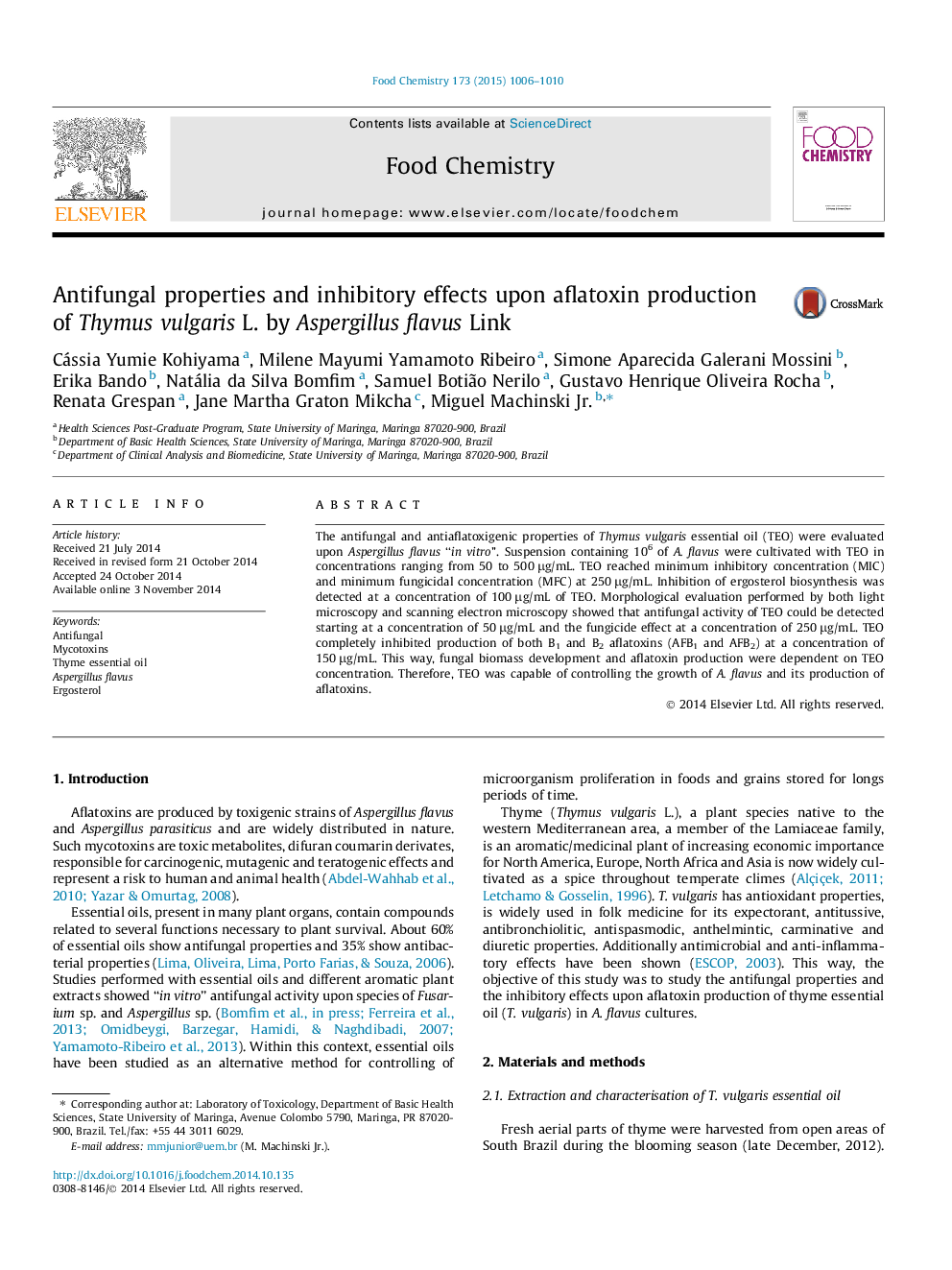| Article ID | Journal | Published Year | Pages | File Type |
|---|---|---|---|---|
| 7594570 | Food Chemistry | 2015 | 5 Pages |
Abstract
The antifungal and antiaflatoxigenic properties of Thymus vulgaris essential oil (TEO) were evaluated upon Aspergillus flavus “in vitro”. Suspension containing 106 of A. flavus were cultivated with TEO in concentrations ranging from 50 to 500 μg/mL. TEO reached minimum inhibitory concentration (MIC) and minimum fungicidal concentration (MFC) at 250 μg/mL. Inhibition of ergosterol biosynthesis was detected at a concentration of 100 μg/mL of TEO. Morphological evaluation performed by both light microscopy and scanning electron microscopy showed that antifungal activity of TEO could be detected starting at a concentration of 50 μg/mL and the fungicide effect at a concentration of 250 μg/mL. TEO completely inhibited production of both B1 and B2 aflatoxins (AFB1 and AFB2) at a concentration of 150 μg/mL. This way, fungal biomass development and aflatoxin production were dependent on TEO concentration. Therefore, TEO was capable of controlling the growth of A. flavus and its production of aflatoxins.
Related Topics
Physical Sciences and Engineering
Chemistry
Analytical Chemistry
Authors
Cássia Yumie Kohiyama, Milene Mayumi Yamamoto Ribeiro, Simone Aparecida Galerani Mossini, Erika Bando, Natália da Silva Bomfim, Samuel Botião Nerilo, Gustavo Henrique Oliveira Rocha, Renata Grespan, Jane Martha Graton Mikcha, Miguel Jr.,
